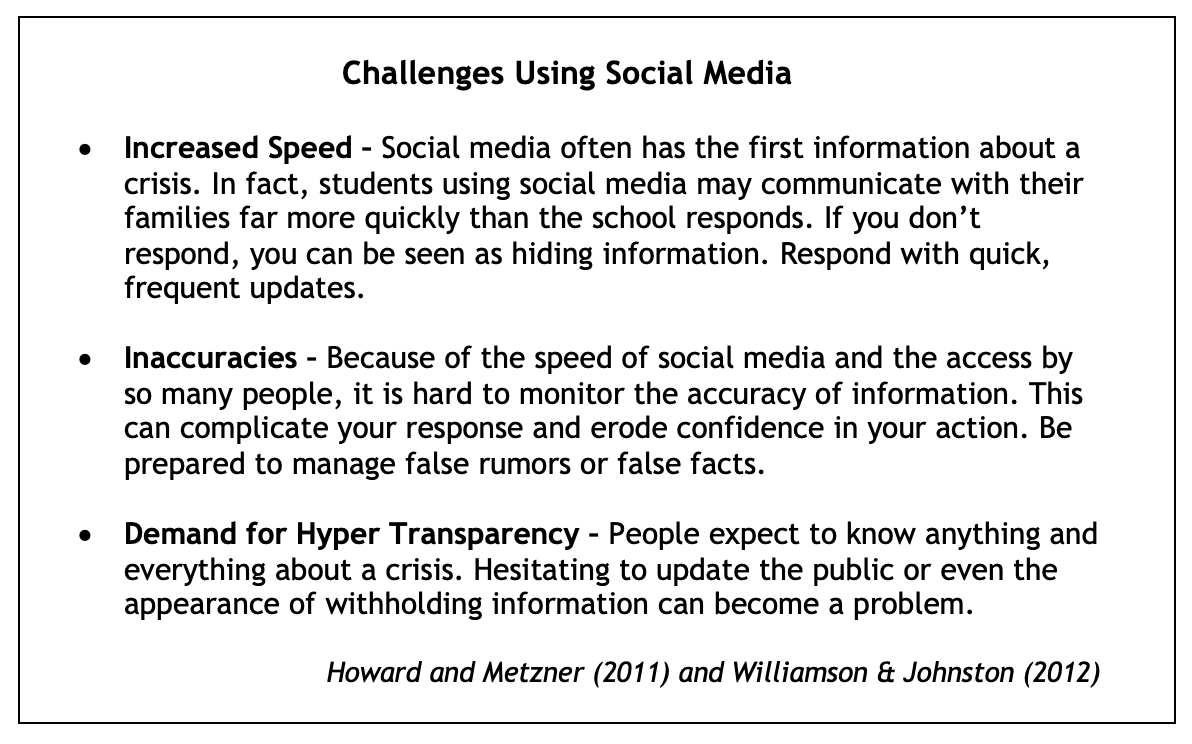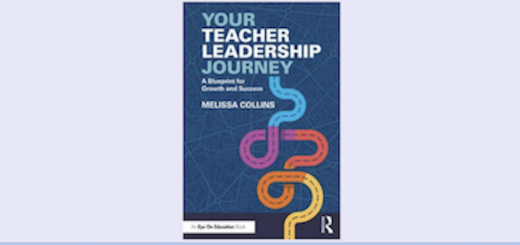Effective School Leaders Are Prepared for Crisis
By Ronald Williamson and Barbara R. Blackburn

Ron Williamson
Hardly a day goes by that there isn’t a report of violence, or some other crisis, in a school. Sadly, it’s endemic.
Fortunately, most principals don’t deal with violence on their school campus, but crises take many forms. It might be a health alert, a weather related problem, a student related dispute, a building issue, a social media blow-up.
The safety and well-being of all students and faculty is a priority. Part of your efforts to provide a safe and secure environment is to anticipate things that might occur and to develop a plan for responding. In the safest schools, there are contingency plans for every possibility, including crisis situations.
As a school administrator, your role is to provide leadership to ensure safety in all aspects of school life. Note our wording – provide leadership.
The most effective school leaders have identified a team whose responsibility is to help make and review plans, develop those that may be needed, and assure that all stakeholders (teachers, parents, and community) are involved and informed.
The key is shared ownership, and that includes offering guidance and support at every point it’s needed.
Dealing with Crisis: Prepare and Prevent
The best way to deal with a crisis is to prevent one from occurring. This happens when you plan and prepare for every possibility and put structures in place that prevent or at least minimize a crisis.
That said, we can have a comprehensive plan, with all the appropriate structures in place, and it’s still not enough. We have to put the plan into action.
When the time for action comes, we’re most likely to have a good result if we have conducted practice drills and educated students and staff on procedures until they are comfortable that they will work when we need to use them.
After every drill you should debrief staff to identify gaps in planning or unanticipated glitches that may have occurred. No plan is perfect, and when the unexpected happens your teachers and other staff need to feel confident that they have your support as they modify and adjust.
Dealing with Crisis: Respond and Recover
When a crisis occurs, first take some deep breaths. Identify the type of crisis, the best plan for the situation at hand, and the needed response. Implement your plan and communicate appropriately with all parties.
Communication should be built into your plan so you are prepared to communicate with outside authorities, families and the media as needed. Have a system in place for keeping families and the public up to date with accurate information about the unfolding event.
Once the crisis has passed, it’s not over. School leaders need to help everyone recover and return to a normal learning environment as soon as possible. There is no exact formula for making this transition. We do our best to balance attending to the emotional needs of students, teachers, and parents while shifting the focus to learning – and even a measured return to instruction is healthy and helps everyone move forward.
During the process, identify appropriate follow-up interventions and monitor to see whether or how much additional support is required. You may need to call in extra help or specialized personnel. At one K–12 school, when a ninth-grader died in a car accident at the beginning of the year, administrators quickly enlisted the assistance of middle school teachers to help counsel students, as they had the strongest relationships with the ninth-graders.
Next, without waiting too long, discuss the lessons learned from implementing your school’s crisis plan and make needed adjustments. As President and 5-Star General Dwight Eisenhower pointed out, there are limits to any emergency plan: “The very definition of emergency is that it is unexpected,” he said.
It is the act of planning, not the plans themselves, that make a difference. It may be painful, but taking time to analyze and reflect on how your process played out is an important step to help you plan for the future.
Finally, create ways to commemorate the event. Some people may want to simply forget, but others need a way to make a positive response or a way to remember.
Dealing with Crisis: Using Social Media
Facebook and Twitter have become primary sources of quick information. Many families turn first to these sources for current, up-to-date information when a crisis occurs and expect a school to use these tools to communicate information. It may be your school’s social media site or a community site that citizens can access. But the bottom line is social media must be part of your response.

The American Public Health Association (2022) has provided seven tips for using social media during a crisis.
- Make sure social media efforts are message-driven.
- Tap into available resources by having a cadre of informed volunteers who are comfortable using social media to help with your efforts.
- Keep messages brief and to the point. People are scanning, not reading.
- Make sure you listen as well as respond. Monitor comments and have a plan for responding.
- Have a backup plan. What will you do if computers or the Internet is not working?
- Avoid the appearance of elitism or a tone that suggests those in charge always know best.
- Social media is a new technology and requires new thinking about how it can be used to communicate. Old strategies or messages probably won’t work.
Also see these tips from the National Association of School Psychologists.
Assuring school safety and stability are primary roles of school leaders. Without a safe school it is almost impossible to have a successful curricular and instructional program. That’s why it’s so critical to anticipate what may be needed, and develop plans with contingencies for all the major crises that may occur.
References
American Public Health Association (2022). Tips for Social Media Use.
Howard, T. & Metzner, R. (2011). How social media can help, and not hinder, during a crisis.
National Association of School Psychologists (2022). Social media and school crises: brief facts and tips.
Williamson, R. & Johnson, J. H. (2012). School leaders guide to social media. New York: Routledge/Eye On Education.

Dr. Barbara R. Blackburn, a “Top 30 Global Guru in Education,” is a bestselling author of over 25 books and a sought-after consultant. She was an award-winning professor at Winthrop University and has taught students of all ages. In addition to speaking at conferences worldwide, she regularly presents virtual and on-site workshops for teachers and administrators. Barbara is the author of Rigor in the Remote Learning Classroom: Instructional Tips and Strategies from Routledge/Eye On Education.
































